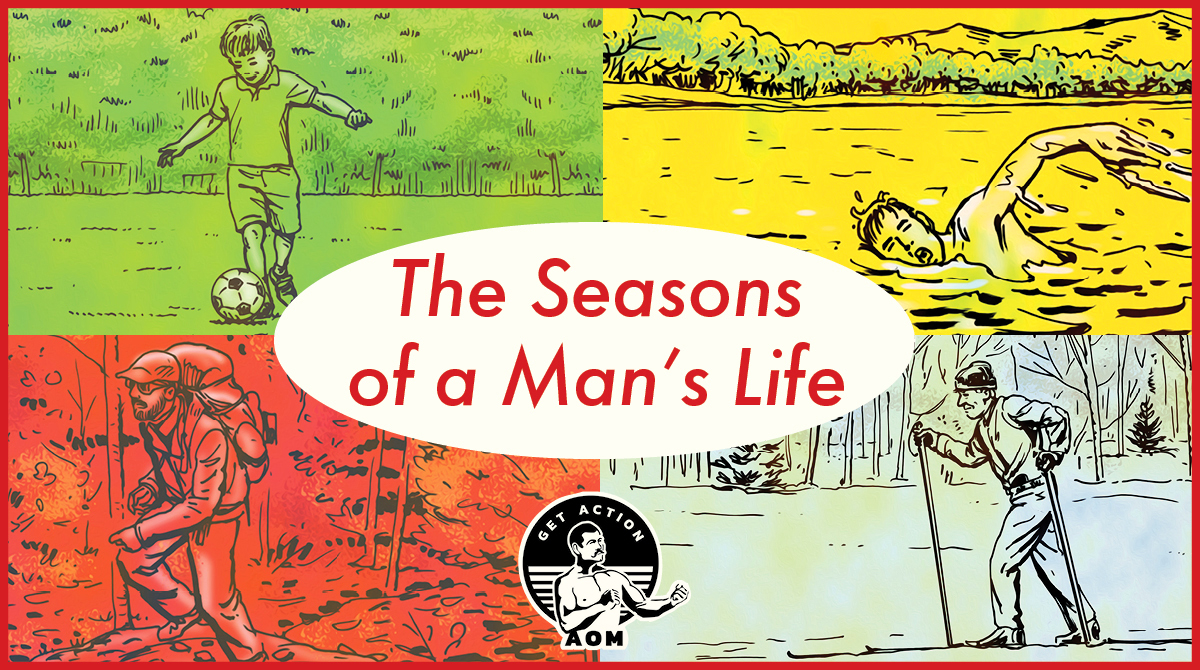
With our archives now 4,000+ articles deep, we’ve decided to republish a classic piece each Sunday to help our newer readers discover some of the best, evergreen gems from the past. This article was originally published in November 2019.
Funny thing about growing older: in every stage, at every age (starting even as a teenager!), you think, “Well, this is pretty much how I am and always will be. My life, mind, and personality have finished developing.” And yet, five, ten years later, you look back and think, “Gee, I’ve really changed a lot!”
Funny thing about life: nobody really explains how and why this happens.
We’ve got a clear sense that there are biological/psychological/social developmental stages in childhood and adolescence. But after that? The remaining decades of one’s life are assumed to be a flat, featureless, essentially static stretch from the twenties ‘til old age.
Yet this simply isn’t the case, as was demonstrated by psychologist Daniel J. Levinson a half century ago.
Back in the late 1960s, Levinson began a years-long study to better understand the contours of men’s lives, especially from the ages of the late teens to the early 40s. He and a team of researchers conducted in-depth interviews with forty men, who ranged in age from 35 to 45, and came from different religious, socio-economic, marital, and ethnic statuses/backgrounds. The interviews, which delved into their life histories, were turned into “biographies” of the men, which were then compared and analyzed to see what could be discovered about the process of adult development.
What Levinson found he hadn’t been looking for and hadn’t expected: the existence of a universal, fixed progression of stages in adulthood, just as exist in childhood and adolescence. As detailed in The Seasons of a Man’s Life, Levinson discovered that the entire life cycle, from birth to death, in fact consists of “qualitatively different seasons, each having its own distinctive character.”
Rather than a frenzy of transformation happening in one’s youth, only to be followed by stasis through old age, phases of growth and interest, conflict and drama, change and renewal happen continuously throughout one’s life, and in a predictable pattern.
This, Levinson says, “is one of the best-kept secrets in our society, and probably in human history generally.”
The Seasons of a Man’s Life: An Overview
If we think of stages, transitions, or sequences in adulthood at all, we tend to think less in terms of age than of singular events like moving away from home, getting married, starting one’s first job, having kids, and so on.
What Levinson discovered is that regardless of when these kinds of events happen along one’s chronological timeline, a more macro, universal order underlies them all. While the timing of life events, the overall content of life (family, career, lifestyle), and even the formation of a sense of maturity itself greatly differs between men, the sequence of seasons — the overall character of the life structure — remains the same for everyone. (As later studies showed, that includes women, for whom the basic architecture of the life cycle is largely similar, though some of the content and contours of the periods differ, befitting the unique experience of the female sex.) As Levinson puts it, just as everyone goes through identical developmental periods of childhood and adolescence, but have very different experiences of youth: “Individuals go through the periods [of adulthood] in infinitely varied ways, but the periods themselves are universal.”
(It is because the life cycle of adulthood runs independent from its discrete milestones (marriage, children, home ownership, etc.), that though the age which men achieve these traditional markers of maturity has gotten later, the overall structure of development that Levinson uncovered fifty years ago still holds up perfectly well.)
Just like the seasons of the year, the periods of adult development are neither good nor bad; rather, as each season is shaped by particular biological, psychological, and social factors, each simply brings “changes in the character of living.” In addition to having a
No comments:
Post a Comment